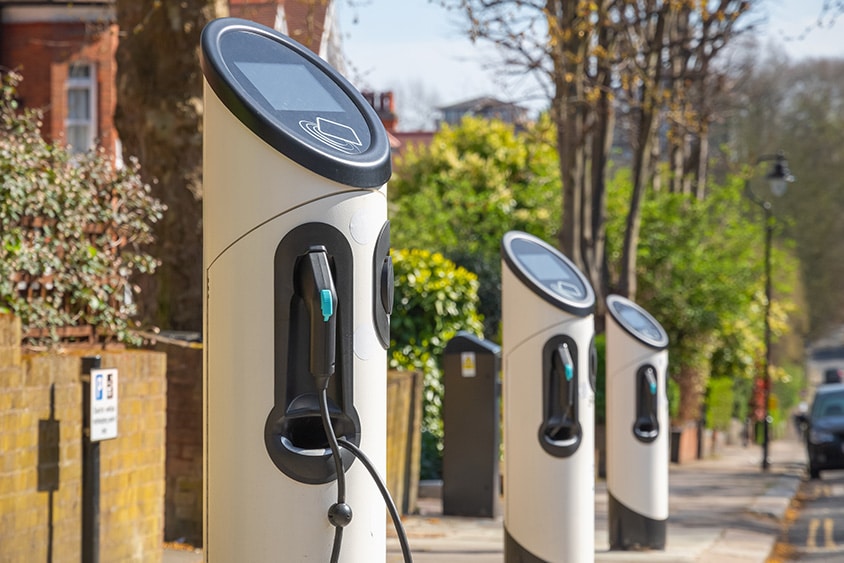AC vs DC charging: what’s the difference?
Written by: Simon Pavey, Last updated:10th September 2024

Whether expanding your electric fleet, encouraging the uptake of electric vehicles amongst your workforce, or simply keeping an eye on the electric HGV market; many fleet managers are now steadily acknowledging and embracing the key role that electric vehicles will play in services moving forwards.
Whichever stage of the electrification journey your fleet is currently at, it pays to know about the ins and out of these evolving vehicles, including how they are charged.
You might be aware of the fundamental differences between AC and DC charging, but do you know how they apply to the charging of electric vehicles? In this blog we will take a look at just that, going over what each of these are and how they apply to electric vehicle.
What is AC and DC
AC stands for “alternating current” and is an electric current which sees the flow of electrons change in direction periodically. DC stands for “direct current” and as the name would suggest it flows in a constant direction. AC is acquired from the grid and needs to be converted into DC to power electric vehicles.
Charging EVs with AC vs DC
When charging an electric vehicle, the type of charger will have an impact on how it charges and how quickly the battery reaches full charge.
Charging at an AC charging point will require the vehicles being charged to convert the power they receive from AC to DC. These types of charging points take the AC current from the grid and carry it to the vehicles, but the task of converting the current to DC must be completed by the vehicle itself.
When charging with a DC charge point, the current is converted to DC within the charger which means the electricity that enters the electric car is ready to use. Removing the task of converting the AC current to DC after the power enters the vehicle means the charge time with DC chargers is faster.
What this means in simple terms is that AC chargers can be found in the form of slow and fast EV chargers, while rapid and ultra-rapid chargers are DC chargers.
Are home chargers AC or DC?
If you have a home charge point installed it will almost definitely be an AC charger. While you could have a DC charger installed at home, it is much more costly for both the equipment and the skills required, as well as the power needed to operate them.
Whilst it sounds tempting to have a fast charger at home, given that most electric cars will fully charge in between 4-8 hours, an AC charger is more than suitable for most EV drivers needs.
Allstar Homecharge from Fuel Card Services
Whether AC or DC, managing charging costs can feel like a troublesome chore for both fleet operators and drivers. Calculating what is owed can become a gargantuan task, especially with a large fleet of electric vehicles.
However, if your fleet drivers charge their vehicles at home there is a solution to help alleviate the stress of calculating mileage for AER. Allstar Homecharge integrates with home charging solutions to calculate the spend on charging at home, so you and your driver know exactly what has been paid.
Allstar Homecharge and other charging solutions, including charge cards, can all be found from Fuel Card Services. Get in touch with our team today to discuss what your fleet could benefit from.
back


